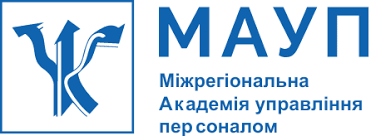ANALYSIS OF UKRAINE'S INNOVATION POTENTIAL THROUGH THE PRISM OF INTERNATIONAL TECHNOLOGY TRANSFER: EUROPEAN DEVELOPMENT TRENDS
DOI:
https://doi.org/10.32689/2523-4536/79-9Keywords:
innovation, transfer, economy, science, research, innovation policy, business, innovation potentialAbstract
In developed economies, the acceleration of scientific and technological progress, the introduction of innovations are associated with the possibilities of developing the knowledge economy, commercialization of technologies and innovation transfer networks. The current stage of scientific and technological progress takes place in conditions of dynamic global competition and at the same time requires cooperation and collaboration. The purpose of this work is to determine the dependence of economic development on indicators that characterize the potential of the knowledge economy and innovation transfer of the country. The study is aimed at finding ways to assess the impact of the potential of the country's scientific and educational activities on innovative development according to the characteristics of the "business-education-science" system in the field of innovation transfer. The methodological tools of the study are the abstract-logical method and correlation-regression analysis, which allowed us to establish relevant connections between indicators of the development of education, science and the economy in the context of the knowledge economy and innovation transfer for Ukraine and Europe. countries in the period 2018–2023. It has been established that in many countries of the "new" Europe (Bulgaria, Greece, Lithuania, Latvia, Estonia, Slovakia, Slovenia, Cyprus, Malta, Portugal), as well as in Ukraine, the trend of independence of GDP growth from indicators of the development of science and education persists. At the same time, the countries of the "old" Europe support innovative progress at a high level, investing in knowledge-intensive activities, infrastructure and the R&D sector. The results can be used to increase the efficiency of innovation transfer in Ukraine, for which the paper provides relevant recommendations.
References
Антонюк Л., Поручник А., Савчук В. Інновації: теорія, механізм розробки та комерціалізації. Київ : КНЕУ, 2003. 394 с.
Геєць В. М., Семиноженко В. П. Інноваційні перспективи України : монографія. Харків : Константа, 2006. 272 с.
Довгаль О. А., Довгаль Г. В. Глобальний інноваційний простір: передумови, специфіка й інструменти формування. Проблеми економіки. 2017. № 1. С. 15–20.
Мартюшева Л., Калишенко В. Інноваційний потенціал підприємства як об’єкт економічного дослідження. Фінанси України. 2002. № 10. С. 61–66.
Mumford M. D., Bedell-Avers K. E., Hunter S. T. Planning for innovation: A multi-level perspective. Multi-Level Issues in Creativity and Innovation. 2007. Vol. 7. P. 107–154.
Rogers E. M. Diffusion of innovations. USA : Free Press, 2010. 518 p.
Bikse V., Lusena-Ezera I., Rivza B. Innovative startups: challenges and development opportunities in Latvia. Int. J. Innov. Sci. 2018. Vol. 10. P. 261–273.
Linton J., Walsh S., Morabito J. Analysis, ranking and selection of R&D projects in a portfolio. R& D Management. 2000. Vol. 32 (2). p. 139–148.
Тебенко В. М. Економіка та організація інноваційної діяльності : Електронний навчальний посібник. 2-е вид., 2018. URL: https://elib.tsatu.edu.ua/dep/feb/ptbd_1/page34.html
Katić A., Ćosić I., Kupusinac A., Vasiljević M., Stojić I. Knowledge-based competitiveness indices and its connection with energy indices. Thermal Science. 2016. Vol. 20. P. 451–461.
Bezuhla, L., Kinash, I., Andrusiv, U., Dovgal, O. Attracting Foreign Direct Investment as an Economic Challenge for Ukraine in the Context of Globalization. Моделювання, розвиток та стратегічне управління економічними системами : матеріали VII Міжнародної науково-практичної конференції; Івано-Франківський національний технічний університет нафти і газу (м. Буковель, 24-25 жовтня 2019). Буковель. С. 195–200.
Marlen A. Fostering sustainability by linking cocreation and relationship management concepts. J. Clean. Prod. 2017. Vol. 140. P. 179–188.
Schamberger D., Cleven N. Performance Effects of Exploratory and Exploitative Innovation Strategies and the Moderating Role of External Innovation Partners. Ind. Innovat. 2013. Vol. 20. P. 336–356.
Rauter R., Globocnik D., Perl-Vorbach E., Baumgartner R. Open innovation and its effects on economic and sustainability innovation performance. Journal of Innovation & Knowledge. 2019. Vol. 4(4). P. 226–233.
OECD Oslo Manual. Paris : OECD, 2005. P. 203.
Grover V., Teng J., Fiedler K. Empirical Evidence on Swanson's Tri-Core Model of Information Systems Innovation. Information Systems Research. 1997. Vol. 8, 3. P. 273–287.
Swanson E. B., Ramiller N. C. The Organizing Vision in Information Systems Innovation. Organization Science. 1997. Vol. 8. P. 458–474.
One-Ki Lee, Mo Wang, Kai H. Lim, Zeyu Peng Knowledge management systems diffusion in chinese enterprises: A multistage approach using the technology-organization-environment framework. Journal of Global Information Management. 2009. Vol. 17, № 1. Рp. 70–84.
Stevens S. S. On the theory of scales of measurement. Science. 1946. Vol. 103. P. 677–680.
Ajzen I. Organizational behavior and human decision processes. The theory of planned behavior. 1991. Vol. 50, № 2. P. 179–211.
Kuan K., Chau P. A perception-based model for EDI adoption in small businesses using a technology-organization-environment framework. Information & Management. 2001. Vol. 38 (8). P. 507–521.
Tornatzky L., Fleischer M., Chakrabarti A. Processes of technological innovation. Publisher: Lexington Books, 1990. 298 p.
Pan M. J., Jang W. Y. Determinants of the Adoption of Enterprise Resource Planning within the Technology-Organization-Environment Framework: Taiwan’s Communications Industry. Journal of Computer Information Systems. 2008. Vol. 48. P. 94–102.
Almus M., Czarnitzki D., 2003. The effects of public R&D subsidies on firms’ innovation activities: the case of Eastern Germany. Journal of Business and Economic Statistics. Vol. 21. P. 226–236.
Archibugi D., Filippetti A., Frenz M., 2013. Economic crisis and innovation: Is destruction prevailing over accumulation? Research Policy. Vol. 42. P. 303–314.
Asmild M., Hougaard L.J., Kronborg D., Kvist K.H., 2003. Measuring inefficiency via potential improvements. Journal of Productivity Analysis. Vol. 19, P. 59–76.
Antonіuk L., Poruchnyk A., Savchuk V. (2003). Innovatsii: teoriia, mekhanizm rozrobky ta komertsializatsii [Innovations: Theory, development mechanism and commercialization]. Kyiv: KNEU, 394 p.
Heiets V. M., Semynozhenko V. P. (2006). Innovatsiini perspektyvy Ukrainy: monohrafiia [Innovative perspectives of Ukraine: Monograph]. Kharkiv: Konstanta, 272 p.
Dovhal O. A., Dovhal H. V. (2017). Hlobalnyi innovatsiinyi prostir: peredumovy, spetsyfika y instrumenty formuvannia [Global innovation space: Prerequisites, specifics, and formation tools]. Problemy ekonomiky, no. 1, pp. 15–20.
Martiusheva L., Kalyshenko V. (2002). Innovatsiinyi potentsial pidpryiemstva yak obiekt ekonomichnoho doslidzhennia [Innovative potential of an enterprise as an object of economic research]. Finansy Ukrainy, no. 10, pp. 61–66.
Mumford M. D., Bedell-Avers K. E., Hunter S. T. (2007). Planning for innovation: A multi-level perspective. Multi-Level Issues in Creativity and Innovation, vol. 7, pp. 107–154.
Rogers E. M. (2010). Diffusion of innovations. USA: Free Press, 518 p.
Bikse V., Lusena-Ezera I., Rivza B. (2018). Innovative startups: Challenges and development opportunities in Latvia. International Journal of Innovation Science, vol. 10, pp. 261–273.
Linton J., Walsh S., Morabito J. (2000). Analysis, ranking, and selection of R&D projects in a portfolio. R&D Management, vol. 32(2), pp. 139–148.
Tebenko V. M. (2018). Ekonomika ta orhanizatsiia innovatsiinoi diialnosti : Elektronnyi navchalnyi posibnyk. 2-e vyd [Economics and organization of innovative activity: Electronic textbook (2nd ed.)]. Available at: https://elib.tsatu.edu.ua/dep/feb/ptbd_1/page34.html
Katić A., Ćosić I., Kupusinac A., Vasiljević,M., Stojić I. (2016). Knowledge-based competitiveness indices and its connection with energy indices. Thermal Science, vol. 20, pp. 451–461.
Bezuhla L., Kinash I., Andrusiv U., Dovgal O. (2019). Attracting foreign direct investment as an economic challenge for Ukraine in the context of globalization. Modeliuvannia, rozvytok ta stratehichne upravlinnia ekonomichnymy systemamy : materialy VII Mizhnarodnoi naukovo-praktychnoi konferentsii (Bukovel, October 24-25, 2019). Bukovel: Ivano-Frankivsk National Technical University of Oil and Gas, pp. 195–200.
Marlen A. (2017). Fostering sustainability by linking cocreation and relationship management concepts. Journal of Cleaner Production, vol. 140, pp. 179–188.
Schamberger D., Cleven N. (2013). Performance effects of exploratory and exploitative innovation strategies and the moderating role of external innovation partners. Industry & Innovation, vol. 20, pp. 336–356.
Rauter R., Globocnik D., Perl-Vorbach E., Baumgartner R. (2019). Open innovation and its effects on economic and sustainability innovation performance. Journal of Innovation & Knowledge, no. 4(4), pp. 226–233.
OECD. (2005). Oslo Manual. Paris: OECD, p. 203.
Grover V., Teng J., Fiedler K. (1997). Empirical evidence on Swanson’s Tri-Core Model of information systems innovation. Information Systems Research, vol. 8(3), pp. 273–287.
Swanson E. B., Ramiller N. C. (1997). The organizing vision in information systems innovation. Organization Science, vol. 8, pp. 458–474.
Lee O.-K., Wang M., Lim K. H., Peng Z. (2009). Knowledge management systems diffusion in Chinese enterprises: A multistage approach using the technology-organization-environment framework. Journal of Global Information Management, vol. 17(1), pp. 70–84.
Stevens S. S. (1946). On the theory of scales of measurement. Science, vol. 103, pp. 677–680.
Ajzen I. (1991). The theory of planned behavior. Organizational Behavior and Human Decision Processes, vol. 50(2), pp. 179–211.
Kuan K., Chau P. (2001). A perception-based model for EDI adoption in small businesses using a technology-organization-environment framework. Information & Management, vol. 38(8), pp. 507–521.
Tornatzky L., Fleischer M., Chakrabarti A. (1990). Processes of technological innovation. Lexington: Lexington Books, 298 p.
Pan M. J., Jang W. Y. (2008). Determinants of the adoption of enterprise resource planning within the technology-organization-environment framework: Taiwan’s communications industry. Journal of Computer Information Systems, vol. 48, pp. 94–102.
Almus, M., & Czarnitzki, D. (2003). The effects of public R&D subsidies on firms’ innovation activities: The case of Eastern Germany. Journal of Business and Economic Statistics, 21, 226–236.
Archibugi D., Filippetti A., Frenz M. (2013). Economic crisis and innovation: Is destruction prevailing over accumulation? Research Policy, vol. 42, pp. 303–314.
Asmild M., Hougaard L. J., Kronborg D., Kvist K. H. (2003). Measuring inefficiency via potential improvements. Journal of Productivity Analysis, vol. 19, pp. 59–76.









